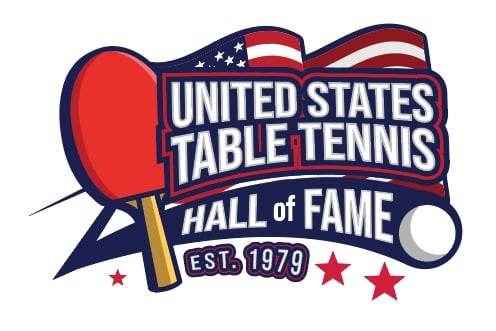Courtesy of Tim Boggan
Wendy, darling–we wanted you to accept your Hall of Fame Award in person. But it’s as if you disappeared with Hook and the Crocodile into Never-Never Land!
Still, we remember that Gene Lee never coached a prettier or more popular Santa Barbaran. You were smart, too, had a head for the game. A popular straight A student at your Santa Barbara High School, how excited you must have been to be the fun recipient of “Wendy Week” among your fellow teenagers. “C’mon, only 25 cents a ticket. Win a prize, and get our Wendy to the U.S. Open Team Championships.” And you did make the long trip East, accompanied by the even younger Angelita Rosal. A 10-5 record for 6th place in that 1967 USOTC’s–not too bad for a 14-year-old.
And just a few months later that first big triumph: a 19 in the 5th win over Michigan’s Janice Martin that made you the National Girls U-15 Champion. Only Violetta Nesukaitis of Toronto and Patty Martinez of San Diego were then more youthfully dominating.
During the 1968-69 season Wendy’s career opened out–her future was with the stars. She had a 17-1 record at the Team Championships, losing only to Connie Sweeris. On coming back from the ’69 World’s as one of our youngest representatives ever, she lost the U.S. Open Women’s final to Martinez, but teamed with Patty to win the first of their back-to-back Doubles Championships. She also got to the final of the Mixed with Jack Howard.
In the ’69-70 season, Wendy again lost only one match at the USOTC’s. But in California she was being challenged by the increasingly competitive Angelita Rosal, whom she beat 23-21 in the 5th in the San Diego Open.
In the quarter’s of the ’70 National’s, Wendy was forced to rally from two games down and down 14-17 in the 3rd to just get by the always determined Alice Green. “Wendy,” I can hear Coach Howard saying, “your footwork’s improved, but you must be more severe at the table. You’ve got to hit off the push.”
Did Wendy go on to beat Nesukaitis in the semi’s? No, she did not–nor did anything resembling a severe look ever pass across her face. The barbarian side of me thought she was too gracious, too pleasant in losing. Though Howard insists she was always tough-minded, she seemed to me too much Wendy Darling–that is, if her dream was to win not just the U-17’s, which she did, but the Women’s Championship as well.
In the fall of 1970, teamed with Heather Angelinetta, Cindy Cooper, and the expatriate English International Irene Ogus, Wendy came to the USOTC’s at Detroit–and though Women’s play was scheduled to start at 4:30 p.m., it was 10 p.m. before they got to play a tie. Heather and Irene, in particular, had a few words to say about that–as they did regarding their Sunday final, played while the Men’s final was in progress, and played off to the side in a makeshift arena where rolled-up tables served to barrier the women players off from everyone’s sight. And what effect had this demeaning treatment on Wendy? This year she had no losses–was the 18-0 MVP.
1971: the Nagoya, Japan World’s, “Ping-Pong Diplomacy,” and the infamous Atlanta National’s. Where was Wendy in all this?
Well, in Nagoya, she had one good win–beat France’s Claude Bergeret, later to become World Doubles Champion with Jacques Secretin. But–my god–she had the historic chance to go to China, and didn’t? Hard to believe, but, yes, that’s true. She’d earlier made arrangements to meet a friend in Hawaii and when the totally unexpected invitation to China came she turned it down. And, what’s more, she apparently did not later regret her choice. She and her friend had a marvelous all-expenses paid 9-day vacation. She was wined and dined by the AMFAC Corporation, given VIP treatment–penthouse accomodations, expensive dinners, $500 in cash, and other fringe benefits. They even offered to send her on to China.
The dreadful Atlanta National’s. How many would like to forget that one? The lack of knowledgeable umpires absurdly conscripted (local volunteers, some even who had to be taught how to keep score), the very bad lighting, the slippery floor that had hit-on-the-run players sliding into despair.
Forget that one, did I say? Impossible for Wendy and Connie Sweeris to do that. Not only were they the Women’s Doubles Champs that year, but they were opponents in the Women’s final as well. Neither had ever won a National Women’s Singles Championship –and of course they’re eventually into the 5th. Connie’s up 8-2 and then 15-9 and holding. Or is she? Suddenly she fails to return 1-2-3-4 serves in a row. A choking nightmare. From which she wakes to catch her breath…to 20-17 match-point. Breathe easy, can she? No, for 3 ads are not enough for Connie–she needs 7 before she can finally win.
Connie ecstatically throws up her hands, and the crowd erupts into a standing ovation. It’s the most applause I’d ever heard given a U.S. Women’s match.
Poor Wendy–how awful she must feel. California’s Howie Grossman comes over, plays Peter Pan, gallantly holds up Wendy’s hand–and she, despite this devastating loss, smiles prettily.
But what kind of fairy-tale ending is this for everyone’s table tennis darling?
O.K., we’ll try another one.
Make it the 1971-72 season. In the U.S. vs. Canada matches at the CNE, Wendy beats Violetta; and in the Redondo Beach Open she beats Patty. Like that better?
At Wendy’s last National’s, she’s again faced with Martinez and Nesukaitis. She ties and unties, ties and unties, her talismanic pony tail, gathers the strands of her loosening thoughts at all the crucial moments–and doesn’t give up a single game.
How’s that for a dream-ending to a career?
